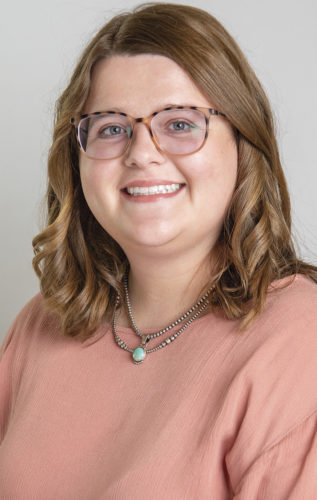In a webinar hosted by NCBA, James Mitchell, assistant professor of agricultural economics and agribusiness and extension livestock economist at the University of Arkansas, discussed how producers can use Pasture, Rangeland and Forage (PRF) insurance as a risk management strategy for their operation.
“Risk management is the planning for all the things that could happen,” Mitchell says. “It’s less important to talk about the things that are happening than preparing for the things that could happen. When you are in the middle of a high-risk situation, it’s more difficult to manage your way out of it.”
Risk management is subjective because everyone’s operations are different, Mitchell adds. Developing a risk management strategy will help manage and take away some of the risk.
There are two types of risk in agriculture, price risk and production risk. PRF insurance helps mitigate forage production risk.
“When operations don’t have enough forage, they must supplement feed by finding, buying and hauling it; cull cattle or change their market strategy for calves,” Mitchell says. “Not having enough forage has high-consequence outcomes.”
Forage production can be compromised by many things, including pests, weeds, wildfires, inputs and the quantity and timing of rainfall, Mitchell says. However, there are not many ways to manage forage production risk compared to other types of risk.
Ways to manage for forage production risk include farm management techniques, like forage diversification and grazing management, and PRF insurance.
What is PRF insurance?
PRF insurance is a rainfall index insurance program.
“PRF is an area-based insurance product offered by USDA-RMA [Risk Management Agency] for perennial forages,” Mitchell says. “It is subsidized crop insurance program where the long-run payments should exceed premiums.”
The program offers financial assistance to buy replacement feed from the lack of rainfall. The pilot program started in 2007 and, by 2012, became more widespread. The program is relatively new and still evolving.
It uses rainfall as a proxy for forage production, only insuring against the decline in forage production specifically caused by the lack of precipitation in your area. This is because it is easier to measure rainfall consistently for everyone rather than trying to account for bale size, the number of cuttings, growing conditions and forage types.
How does PRF insurance work?
PRF is an area-based insurance, based on rainfall for a grid system.
“Your policy is based on the grid you select,” Mitchell says. “Grids are the size of 0.25 latitude by 0.25 longitude or about 12 by 12 miles at equator. Producers with ground in more than one grid can only choose one grid to select for all of it.”
The policy payment is based on the rainfall index for the grid area the producers select. The payout is a calculation of two indices, the expected index value and actual index value. The expected index value is developed from the average precipitation data for the grid area, going back to 1948.
Producers must make five decisions when deciding to enroll in the PRF insurance program:
- Intended use
- Insured acres
- Coverage level
- Productivity factor
- Two-month index intervals and percent of value
Producers start by choosing the intended use of the insured forage acreage. Grazing acres have a lower premium compared to hay acres. The lower premium on these acres also means there is a lower indemnity payment for grazing acres when loss is triggered.
The second and third decision producers make is to choose which acres to insure and the coverage level for those acres. Producers do not have to cover all of forage acreage. PRF coverage level is the index value that triggers an indemnity when the realized precipitation is below for the selected interval. While higher coverage levels are more expensive, they also are more likely to trigger a payment.
The fourth decision producers make is on the productivity factor. USDA-RMA calculates each county’s base value of production. Producers then choose how much of the base value to cover. Again, higher productivity factors are more expensive; however, you receive a larger indemnity payment when loss is triggered.
The fifth decision producers make is deciding which two-month index intervals to choose. You must choose a minimum of two two-month intervals of the 11 interval options and cannot exceed six two-month intervals. The producer chooses how to allocate coverage across the intervals.
According to Mitchell, there are three common approaches when producers are assigning coverage:
- Distribute coverage evenly across intervals.
- Match growing season for specific forage.
- Target specific intervals more heavily.
The third option is most commonly used among producers. While targeting specific intervals more heavily usually provides a larger indemnity payment, it also is more of a gamble if loss isn’t triggered.
Producers use the PRF program to maximize probability of receiving a payment. When deciding if enrolling in the PRF program is the right decision, producers should consider:
- The correlation between index and forage production on their operation. Precipitation can vary within the grid area.
- The relationship between precipitation and forage yield. Do other factors play a role in depleting forage production like heat, pests, etc.?
- Budget how much hay can be purchased with payment. What premium fits your needs?








